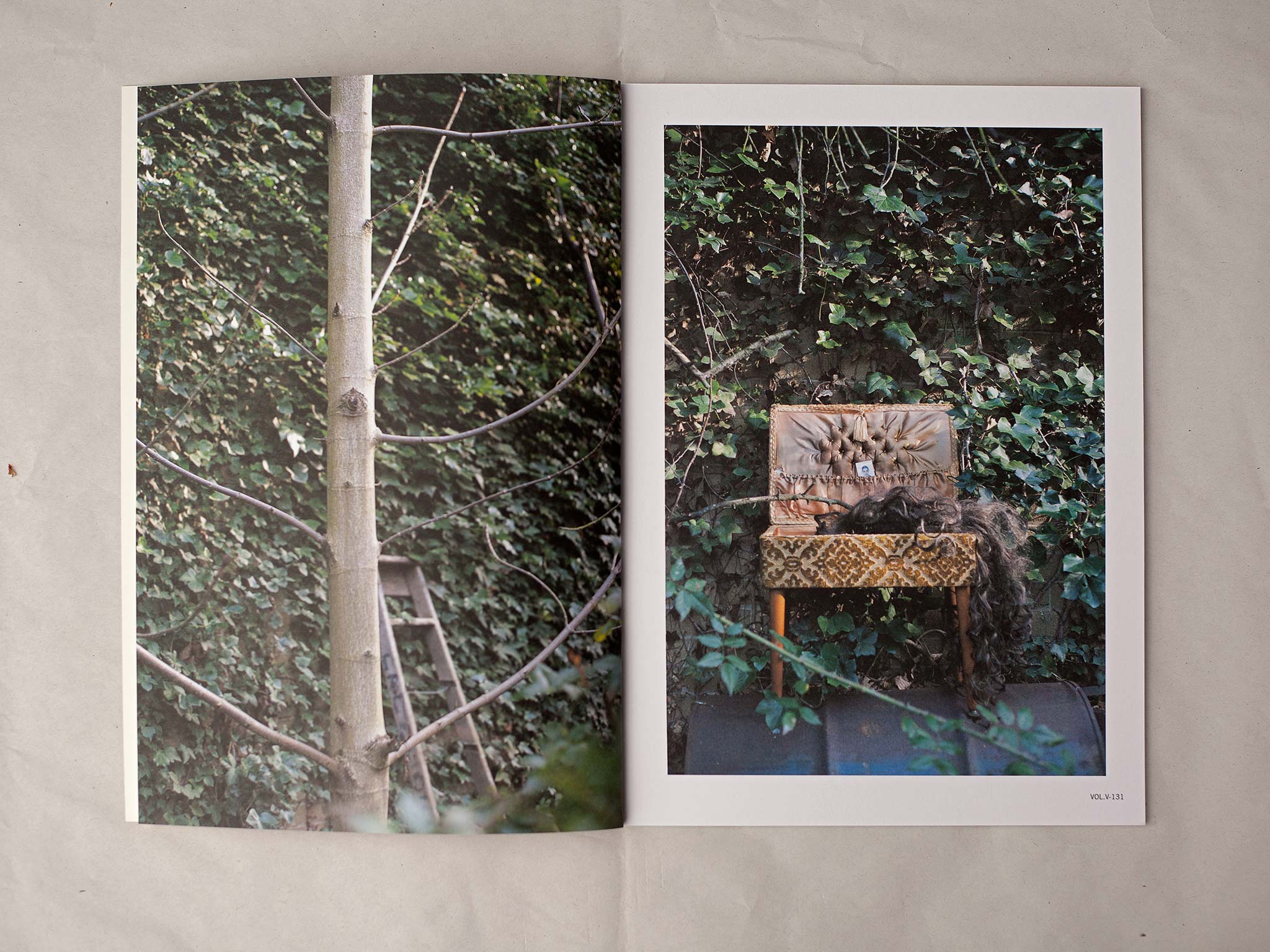








TITLE WORK: Queer Paper Gardens
SUBTITLE: or The Wild Life of Symbols
AUTHOR: paula roush + maria lusitano
MEDIUM: Artist's book
PAGES:
DIMENSIONS: 29.7 x 21 x 3 cm
PAPER: munken pure paper 150 gsm
BINDING: Five softcover volumes
in rubber stamp customised, numbered
and signed grey board slipcase
PROCESS: Offset litho
COLOUR: colour
TEXTS:
(Vols I-IV) Les deux amies / The two girlfriends
(Gifts of the Feminine), The mise-en-scéne of the
unconscious (A Week of Goodness), The photoalbum
in the drawing room (cardomania), the album of
Madame B., The paper mosaick (Female cruising
in the garden) by paula roush and maria
lusitano. See here
(Vol V) a journal of one’s own, a text dedicated
to mary, margaret, valentine, alice, paula, maria
and all the other women by cristina duarte.
See here
PUBLISHER: EDP Foundation with the support
of Centro Portugues de Serigrafia
YEAR: 2013
PART OF THE EXHIBITION: Estranhos
Jardins de Papel/ Queer paper gardens
CURATOR: João Pinharanda
MUSEUM: Museu da Eletricidade Lisbon
DATE: June 7- September 8 2013
Queer Paper Gardens or The Wild Life of Symbols
artwork: paula roush+maria lusitano
guest writer: cristina duarte
Signed numbered edition / £98 free shipping (with love)
shop here [+]
ABOUT THE WORK
Queer Paper Gardens approaches the history of collage through a combination of artistic research and historic visual enquiry, including an installation made up of a collage-salon, two double-screen video-essays and two large-scale charcoal drawings. It explores travel and collage as interlinked cultural queer and feminist practices in its relationship to contemporary art.
The project focuses on several works of collage, created across three centuries, ranging from Flora Delanica (1772-1782), Mary Delany's botanical collage work considered a pioneering instance of collage on paper, to the photographic collages of the Victorian era and, finally, to the Modernist collage-novels that constitute the exhibition's fulcrum: Max Ernst's Une Semaine de Bonté (1934), and Valentine Penrose's Dons des Féminines (1951).
Revisiting all these works brings out a number of visual and textual narratives that explore the concept of journey: a journey through the history of collage and a delocalisation in time – something quite appropriate to the inherent features of the collage technique; This journey makes visible ways in which collage creates spaces that facilitate experiments with botanical taxonomies as metaphors for gender and sexuality and also a critique of the bourgeois domestic setting conveyed through escapist dreams and travel to exotic locations.
The relation between collage and art publishing is part of artists’ books history. Two relevant examples of small editions books are part of the exhibition’s material sources: Max Ernst’s A Week of Goodness (1934) and Valentine Penrose’s Dons des Feminines (1951). Both propose new perspectives on the relationship between found material and personal biography, collage and narrative, image and text. Departing from these and looking at early predecessors of the visual book- encountered in the Georgian hortus siccus (herbarium) and the Victorian photo album- the project explores:
– Working with found material: the author as editor with a subjective vision of an archive or collection
– A queer and feminist history of collage that looks at early precursors of collage amongst 18th century landscape female artists, female victorian photo-collage, the surrealist collage novel and contemporary collage approaches
– Visual storytelling when sequencing books: strategies that range from cinematic structure to the travel book.

